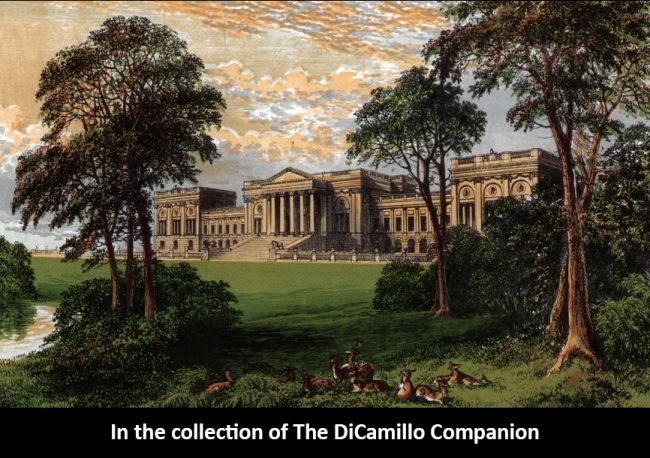
The garden facade from "Morris's Views of Seats," circa 1875.
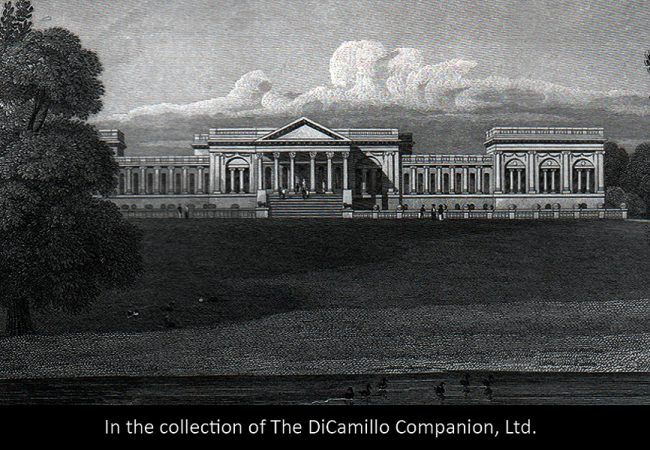
An early 19th century engraving of the garden facade from "Neale's Views of Seats"
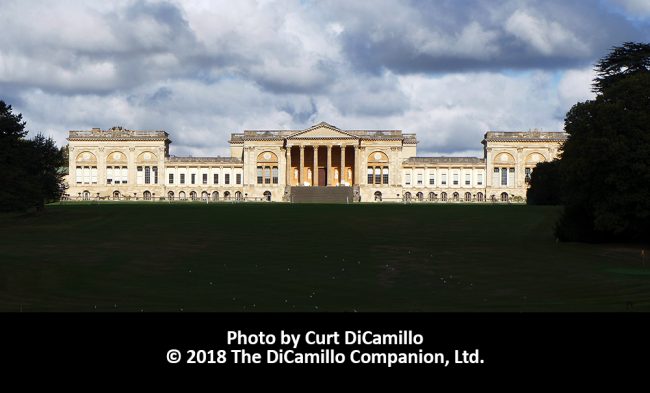
The garden facade
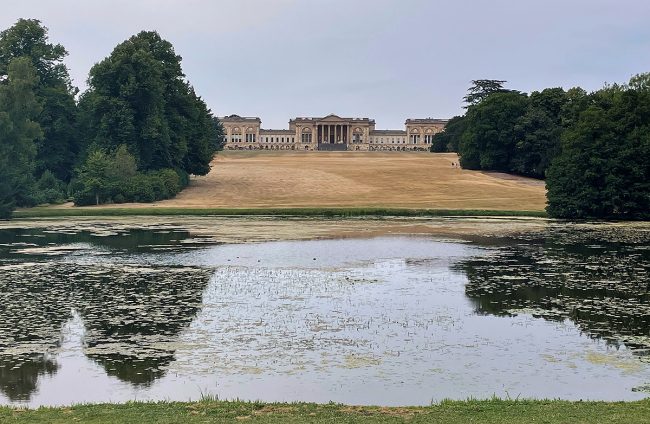
The garden facade. Photo by kind permission of Steve Goodwin.
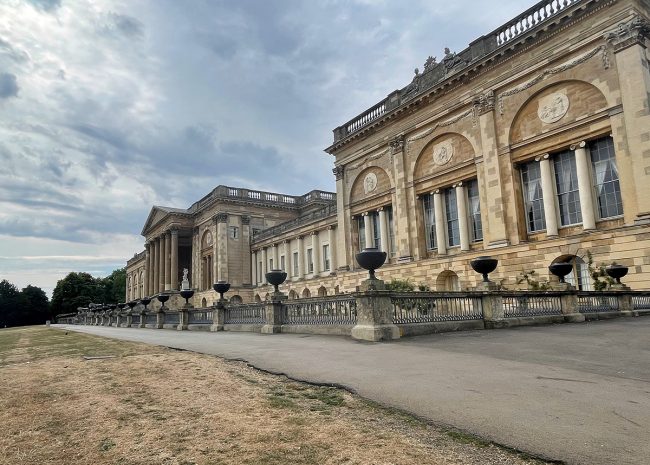
The garden facade. Photo by kind permission of Steve Goodwin.
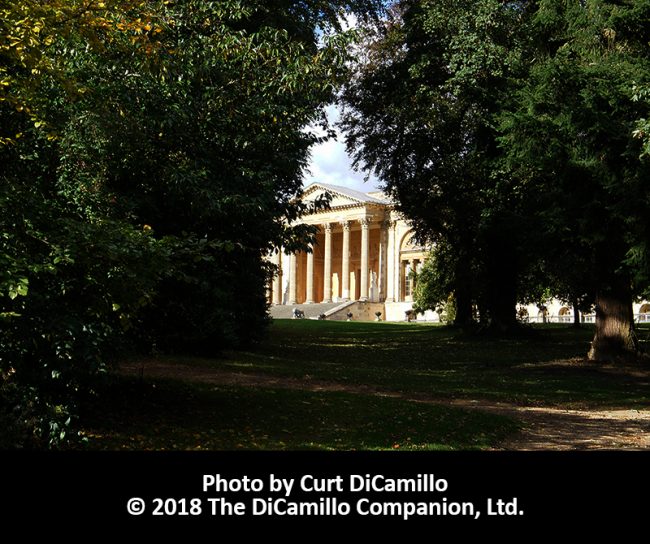
The garden facade
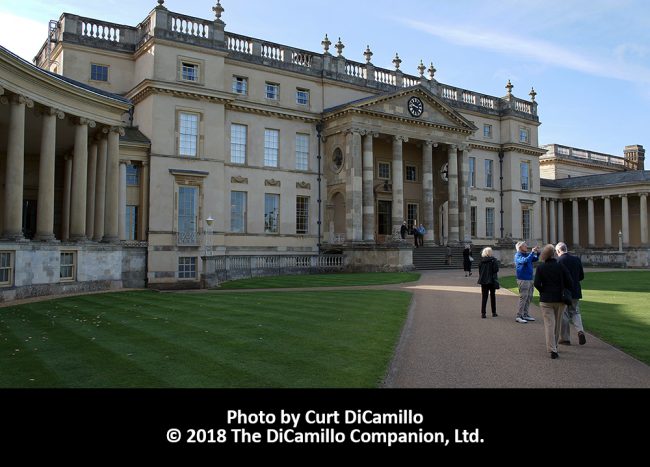
The entrance facade
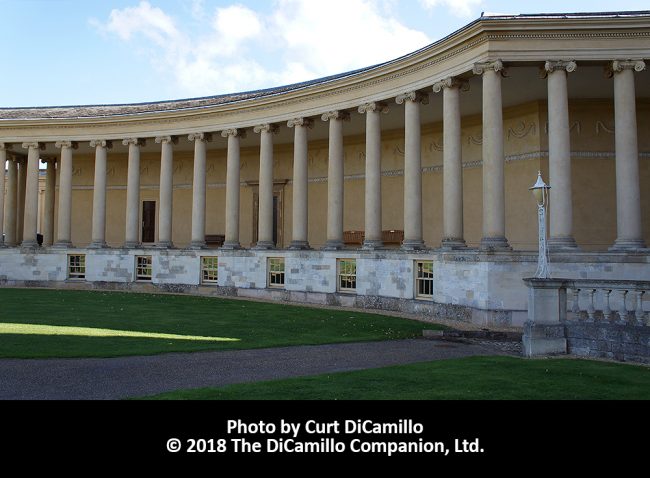
The entrance facade left colonnade
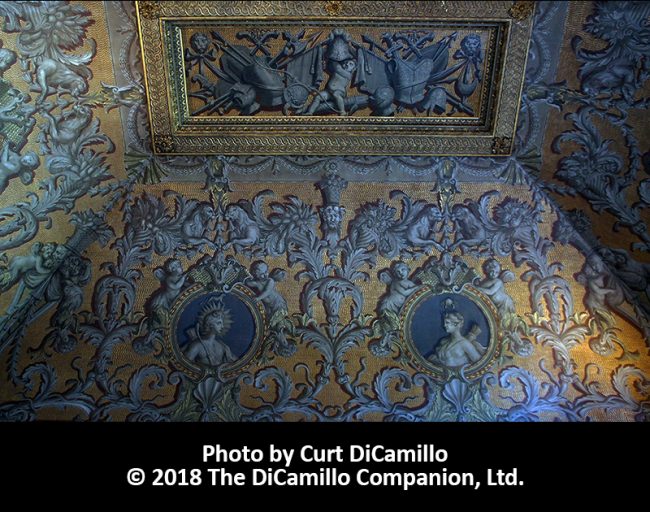
The north hall ceiling
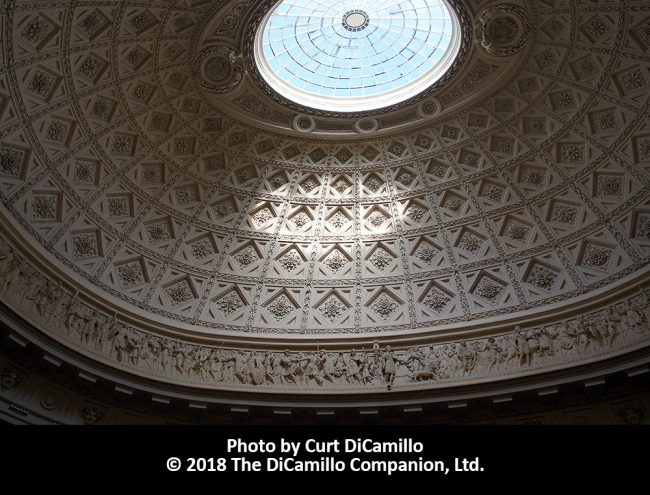
The rotunda
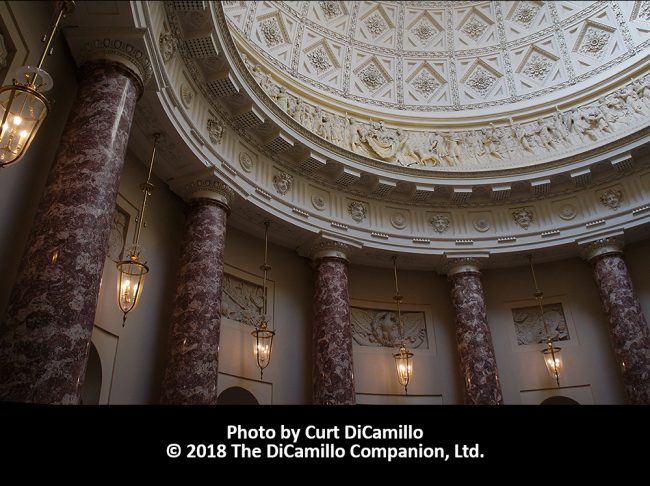
The rotunda
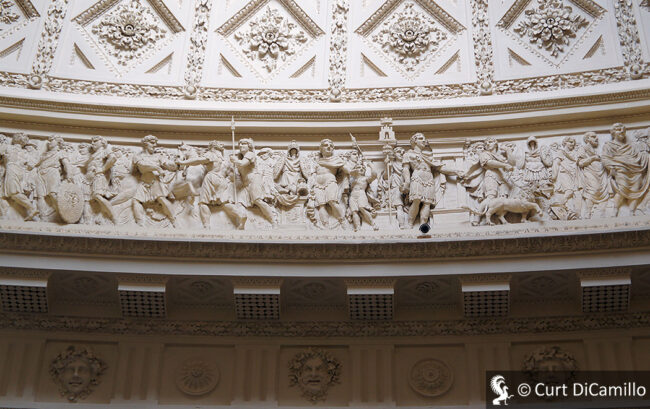
Detail of the rotunda's frieze plasterwork, which features over 280 human and animal figures in the style of an ancient Roman triumphal arch or tomb.
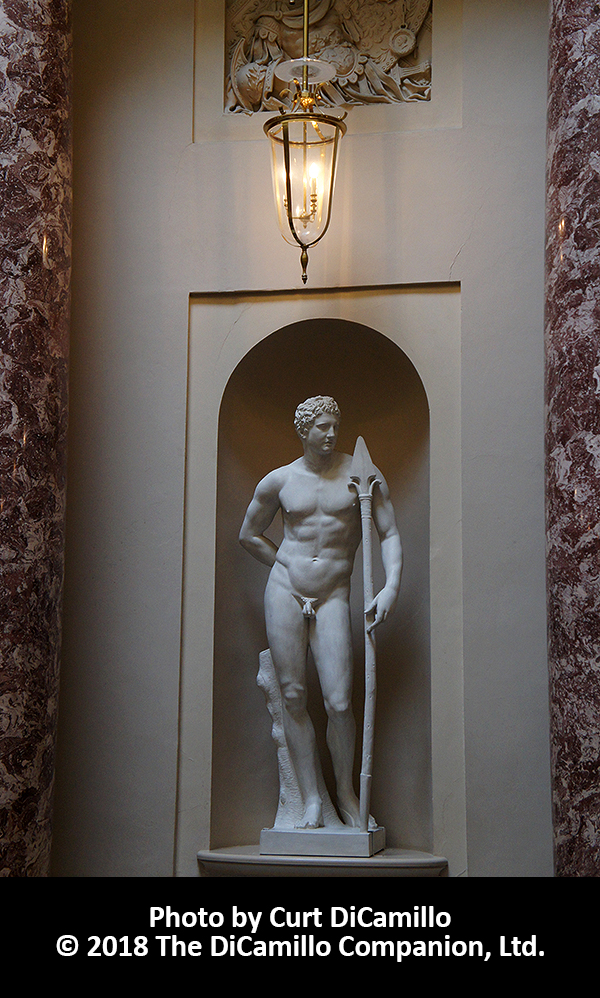
Sculpture in the rotunda
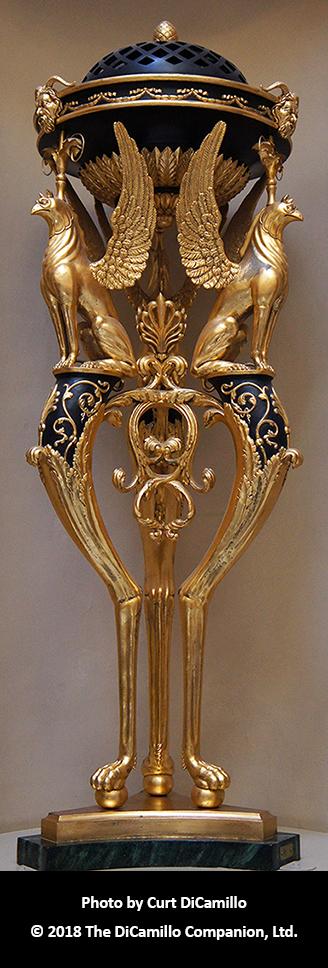
Torchiere in the rotunda
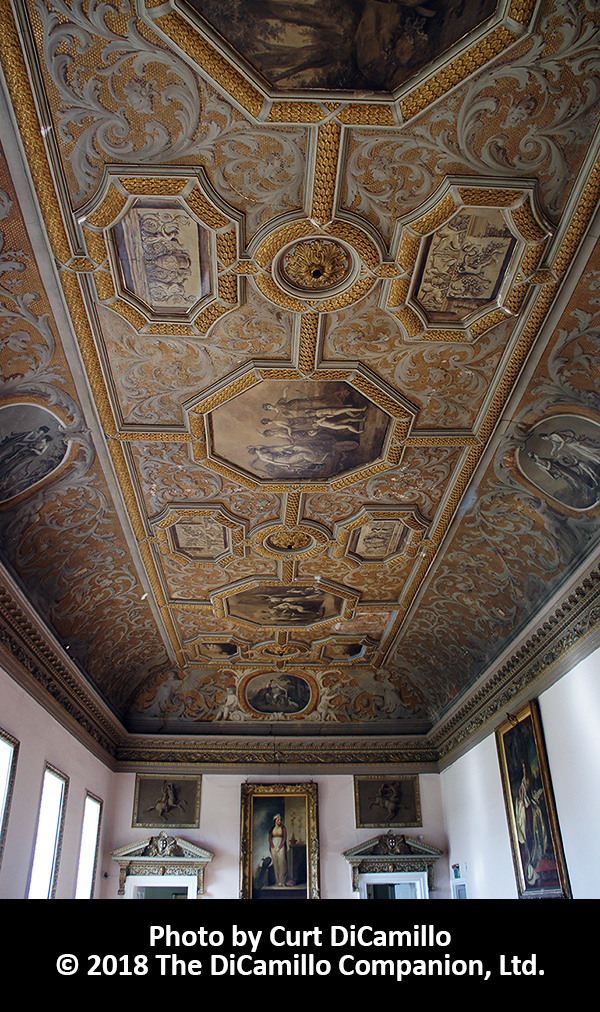
The state dining room
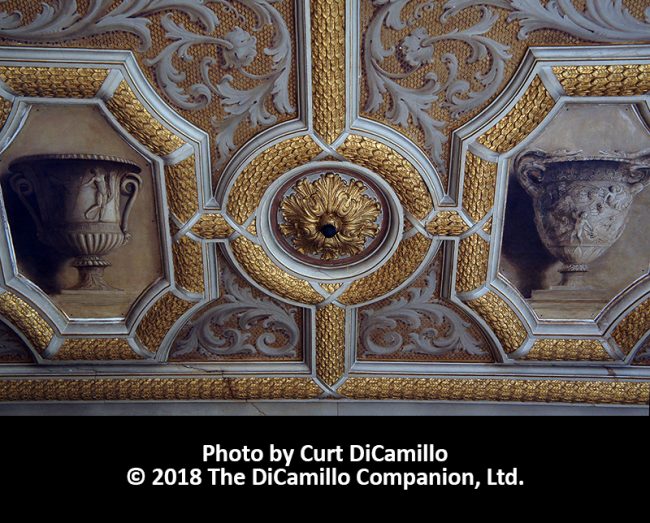
Detail of state dining room ceiling
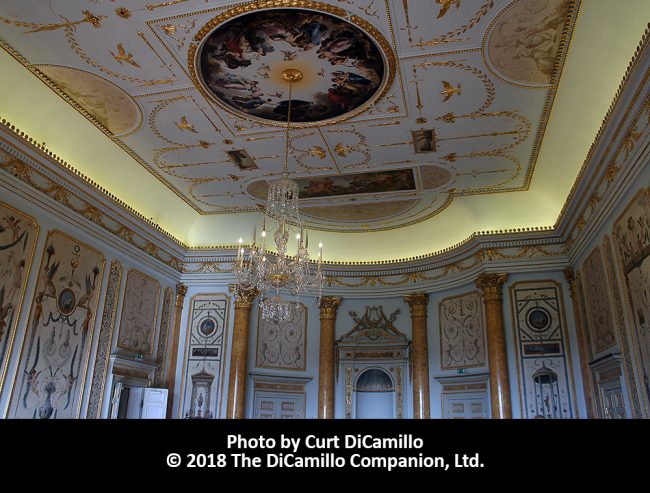
The music room
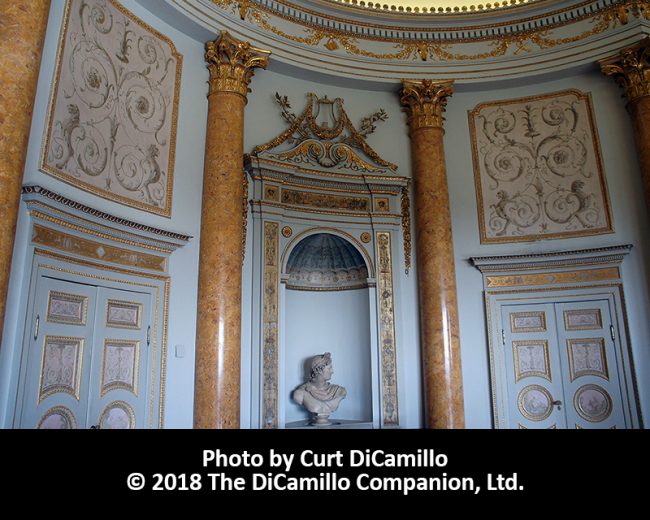
The music room
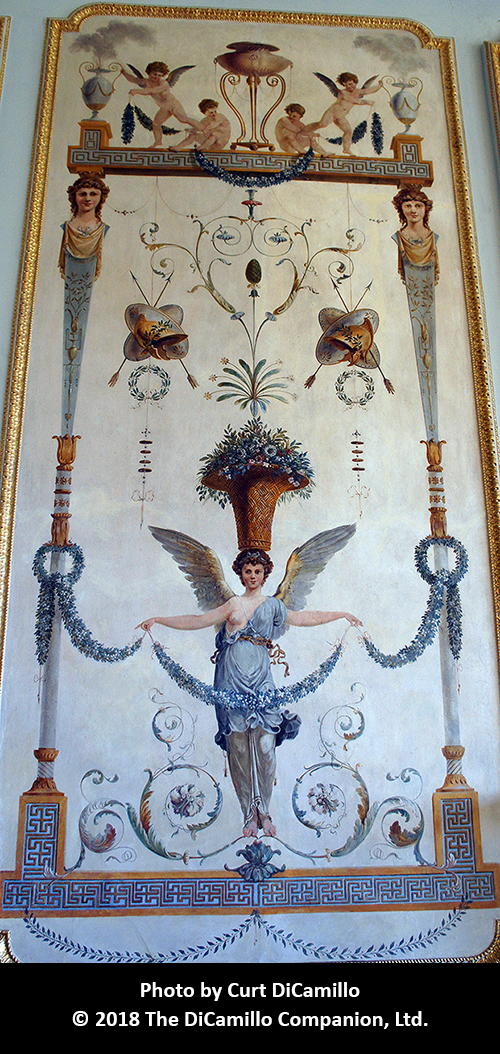
The music room
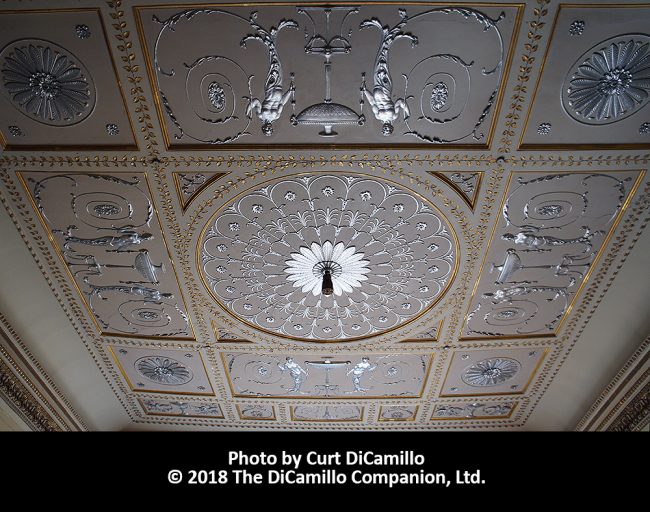
The state room ceiling
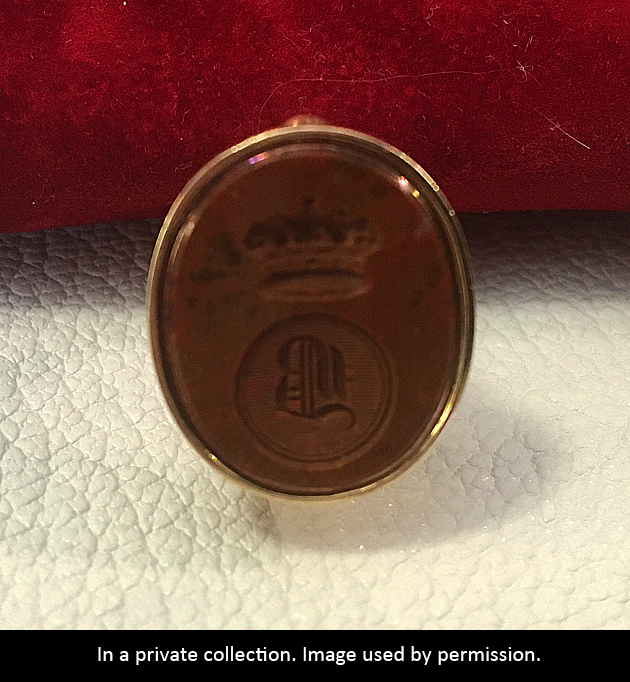
Carnelian intaglio seal of the Marquess of Buckingham
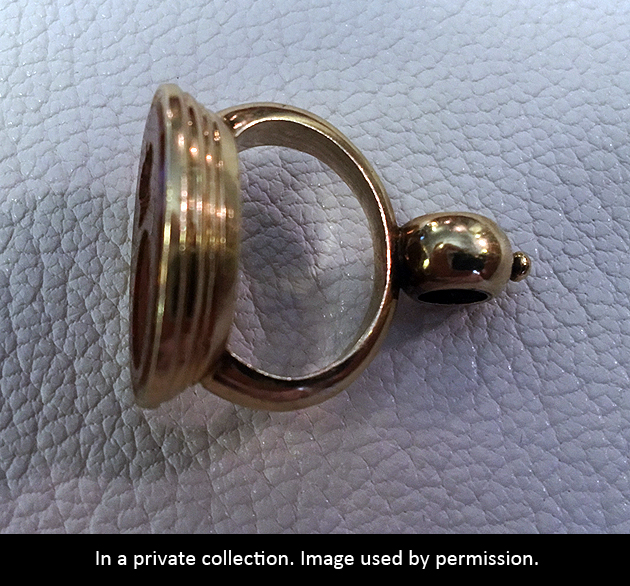
Carnelian intaglio seal of the Marquess of Buckingham
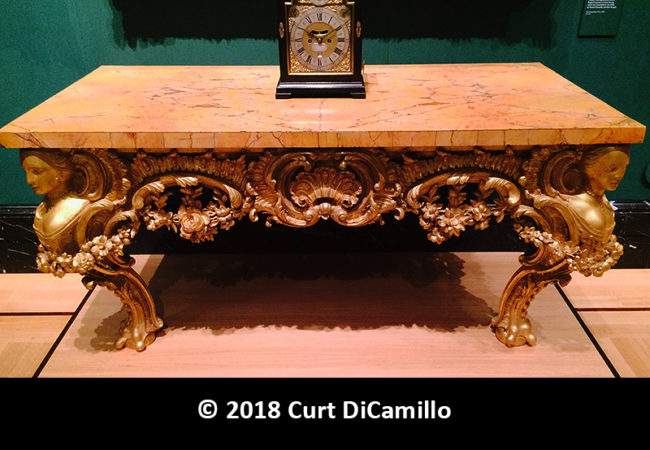
One of a pair of mid-18th century pier tables attributed to Giovanni Battista Borra. These tables, today in the collection of the Fitzwilliam Museum, were very likely commissioned for Stowe.
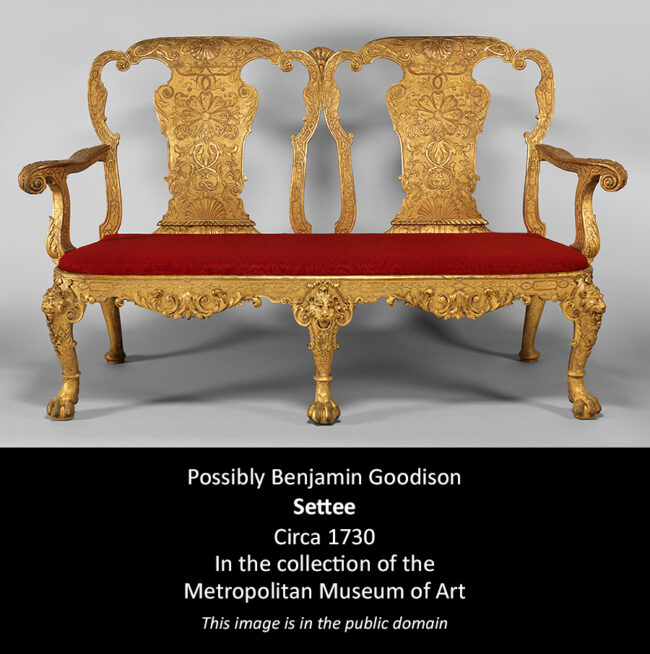
This settee was sold during the famous 1848 sale of the contents of Stowe House
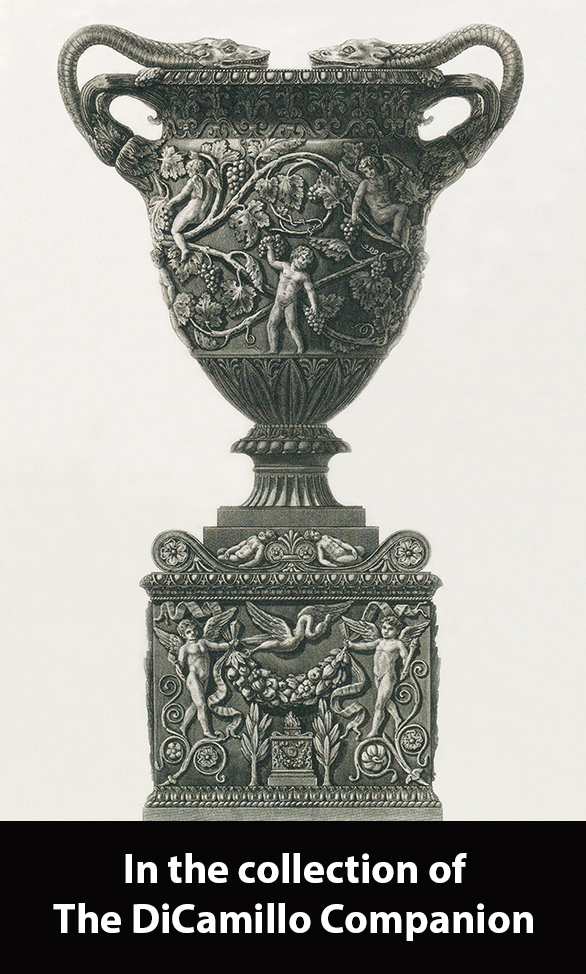
The Buckingham Vase (aka The Stowe Vase) from a 1778 engraving by Piranesi. The original vase, once in the collection of Stowe House, is today in the collection of the Los Angeles County Museum of Art. An early 20th century vermeil version is today in the collection of Lotherton Hall.
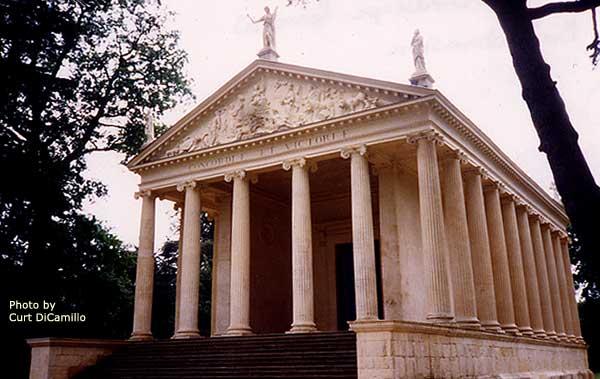
The Temple of Concord and Victory
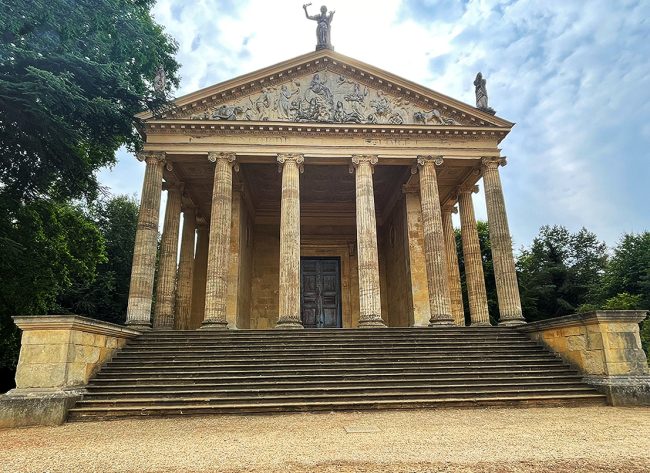
The Temple of Concord and Victory. Photo by kind permission of Steve Goodwin.
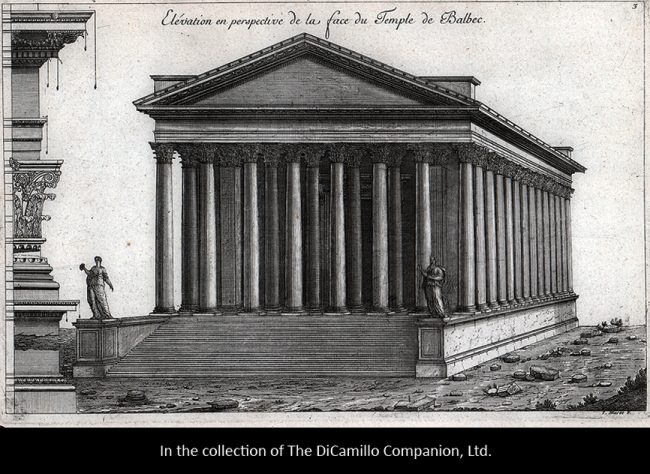
The Temple of Baalbek from a circa 1665 engraving by Jean Marot. The temple may have inspired some of the Stowe follies.
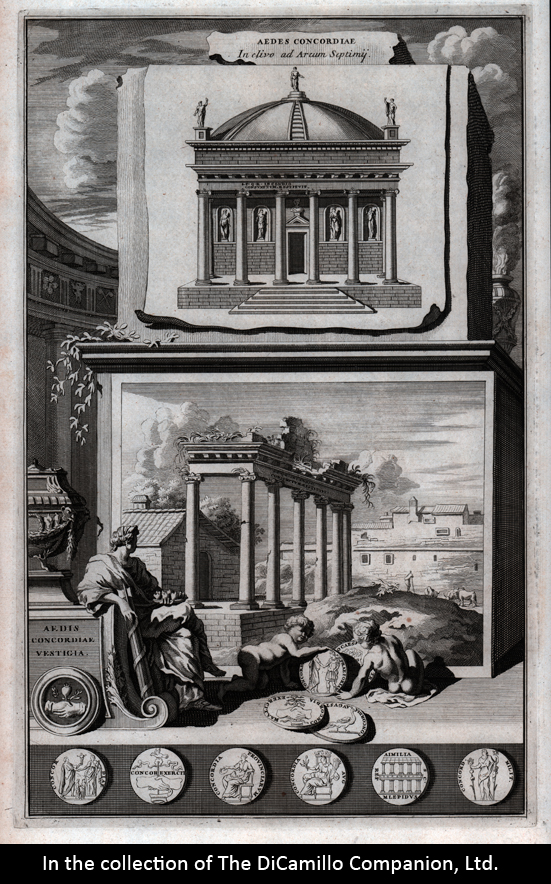
The Temple of Concord by Francois Desseine, published by Francois Halma in 1704.
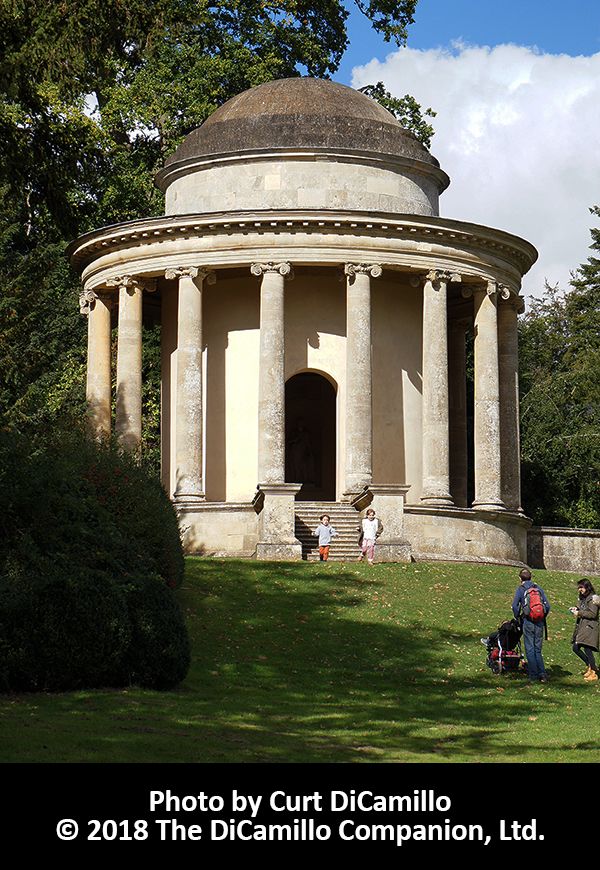
The Temple of Ancient Virtue
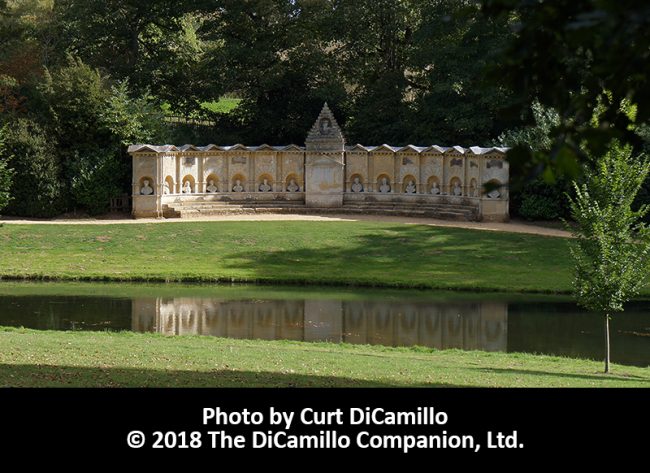
The Temple of British Worthies
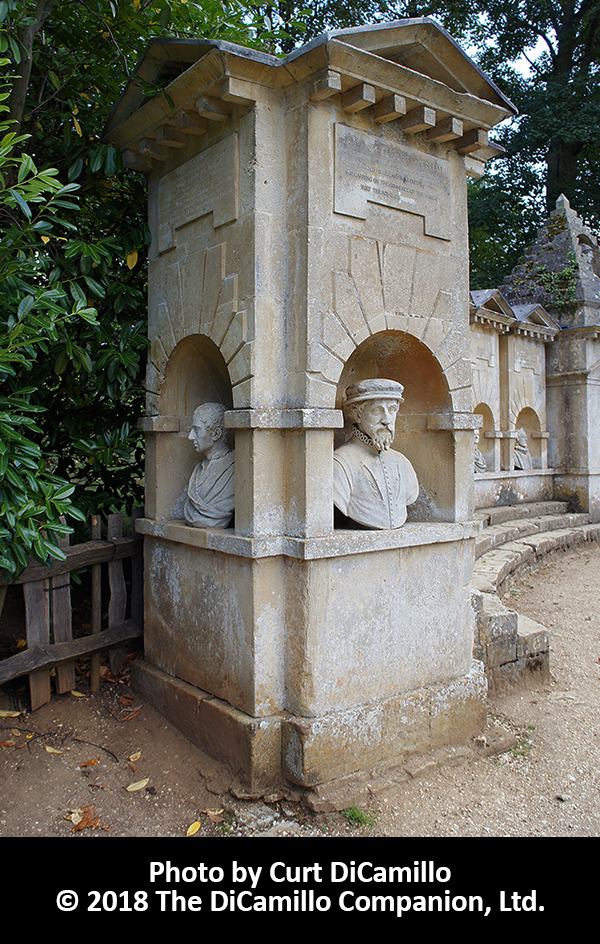
The Temple of British Worthies
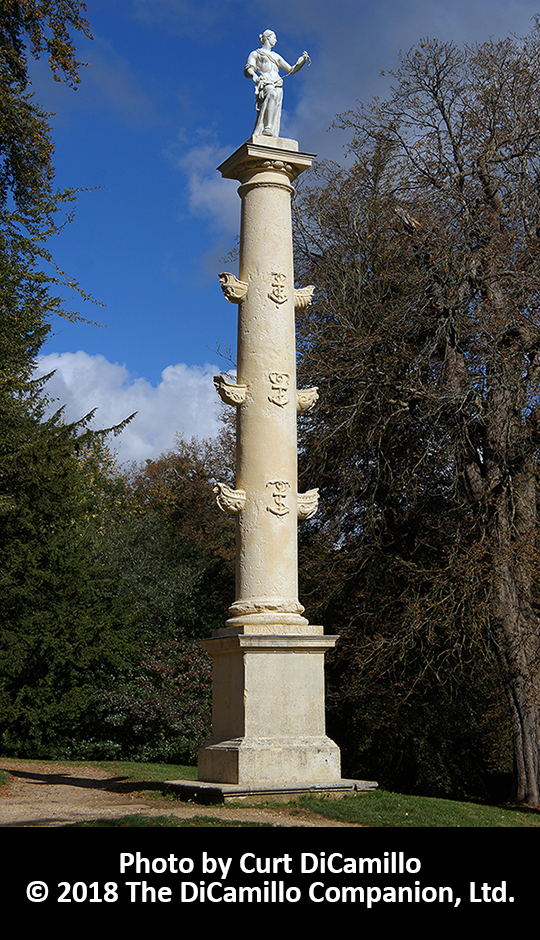
The Grenville Column
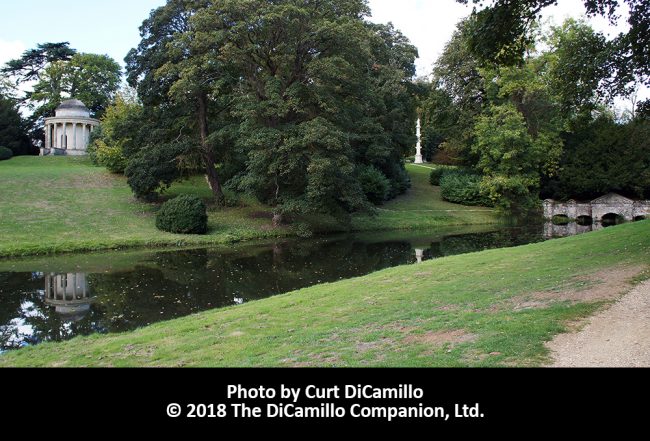
The Elysian Fields, with the Temple of Ancient Virtue, the Grenville Column, and the bridge.
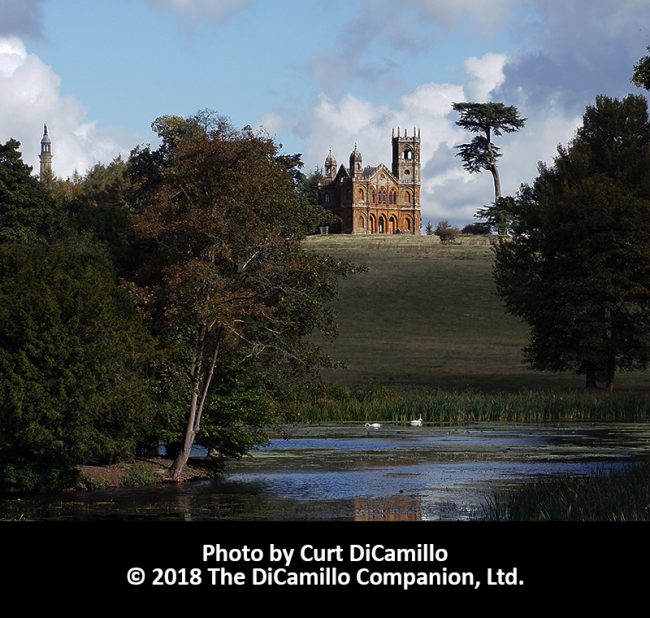
The Gothic Temple
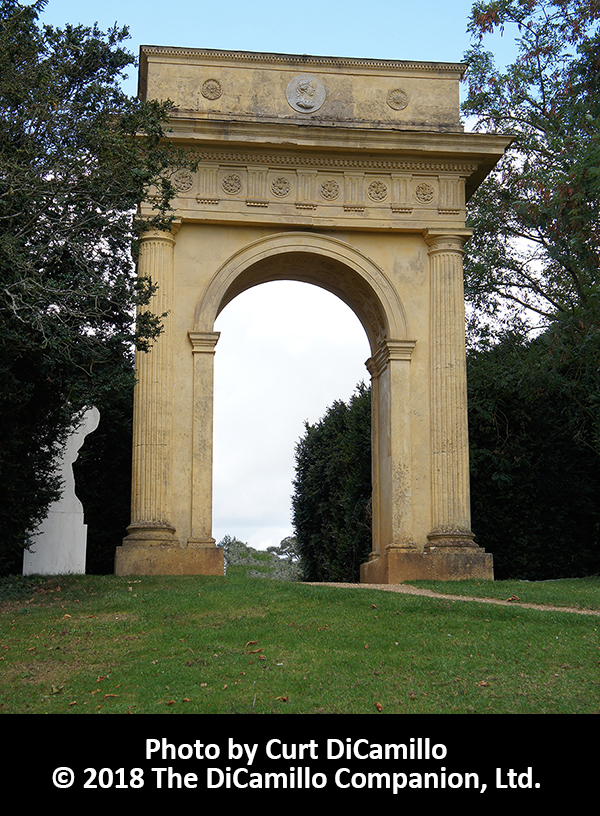
The Doric Arch
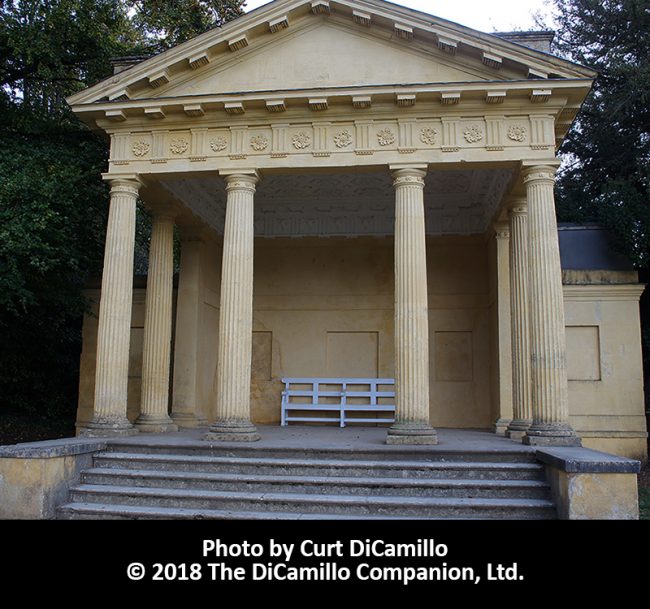
One of the lake pavilions
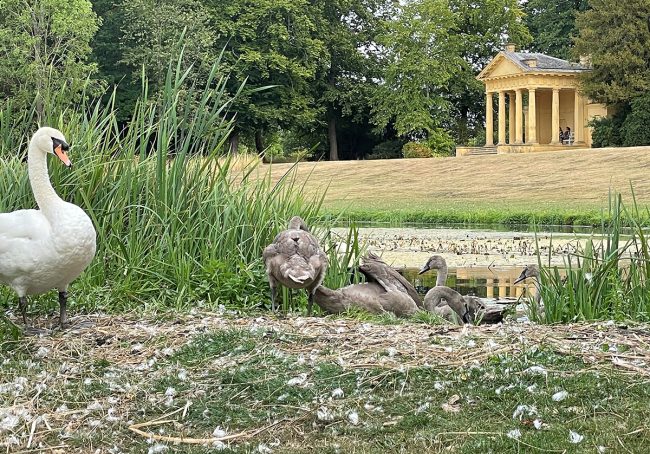
Lake Pavilion with swan family. Photo by kind permission of Steve Goodwin.
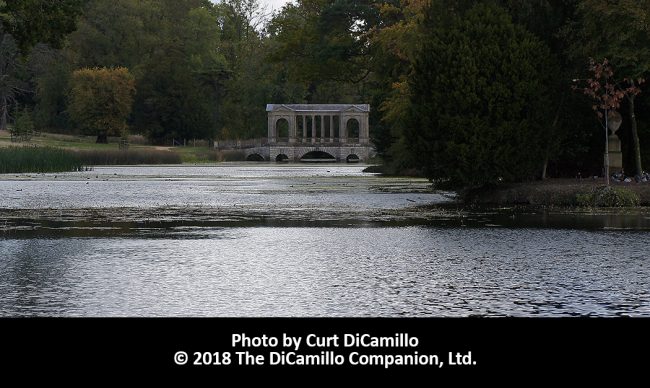
The Palladian Bridge
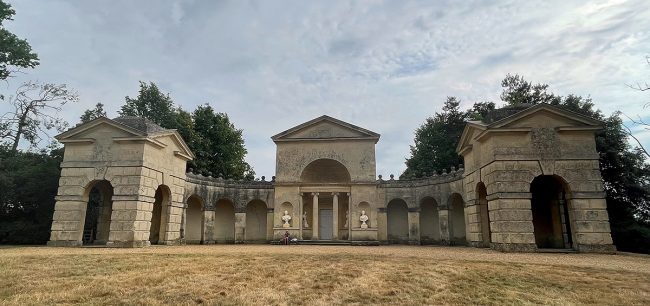
The Temple of Venus. Photo by kind permission of Steve Goodwin.
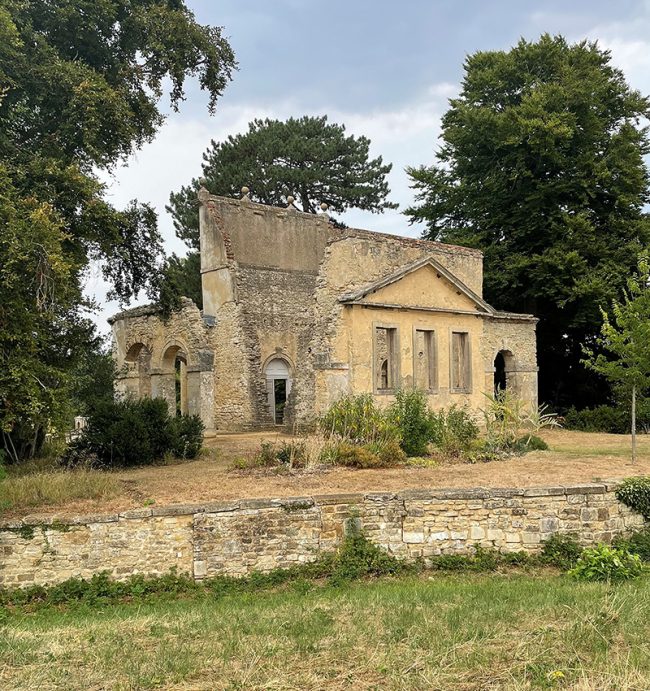
The Temple of Friendship. Photo by kind permission of Steve Goodwin.
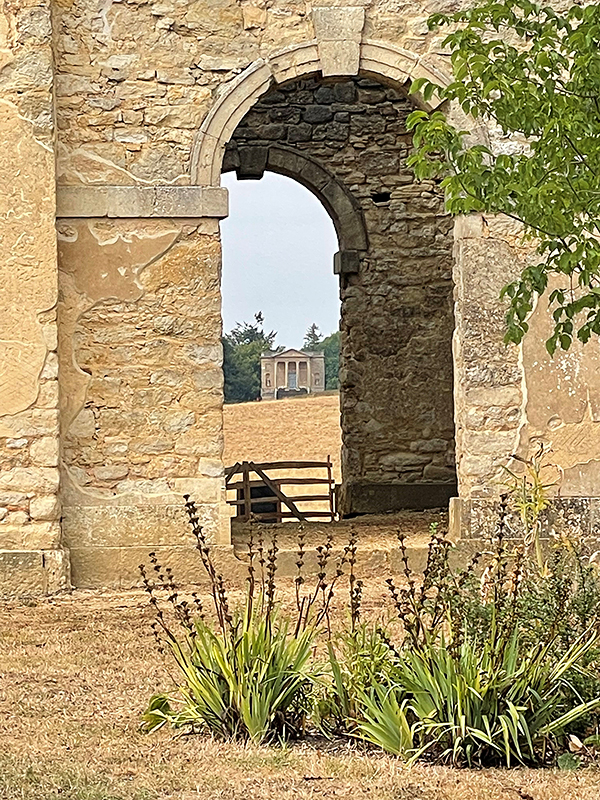
The Queen's Temple seen through a arch in the Temple of Friendship. Photo by kind permission of Steve Goodwin.
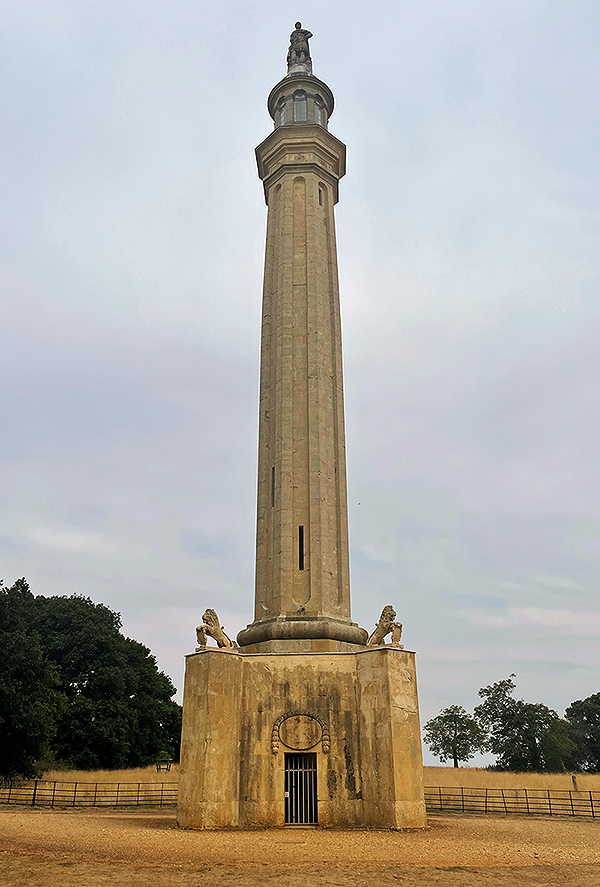
Lord Cobham's Pillar. Photo by kind permission of Steve Goodwin.
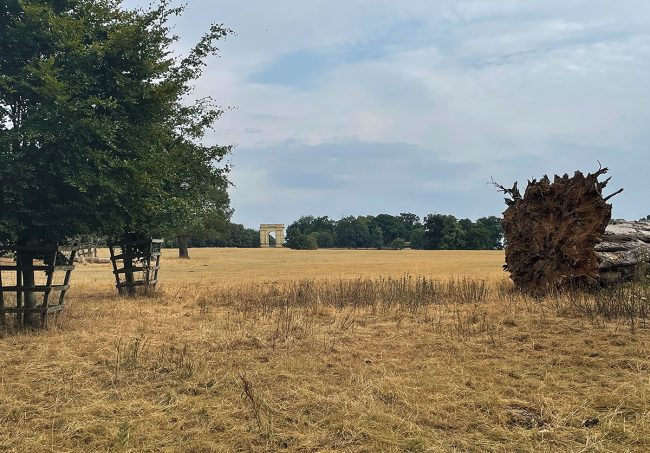
The Corinthian Arch. Photo by kind permission of Steve Goodwin.
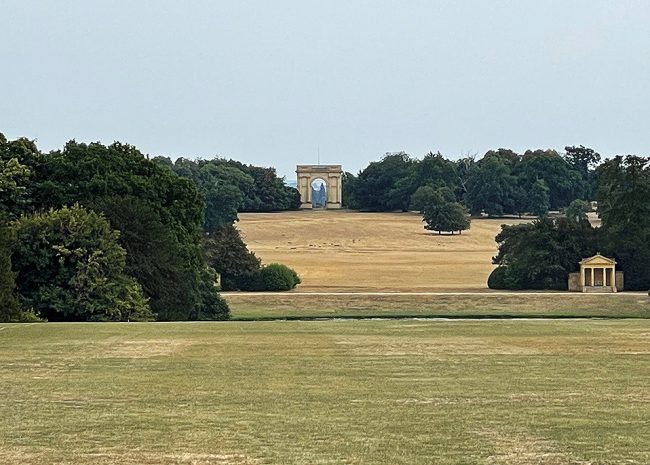
The Corinthian Arch with a Lake Pavilion (right). Photo by kind permission of Steve Goodwin.
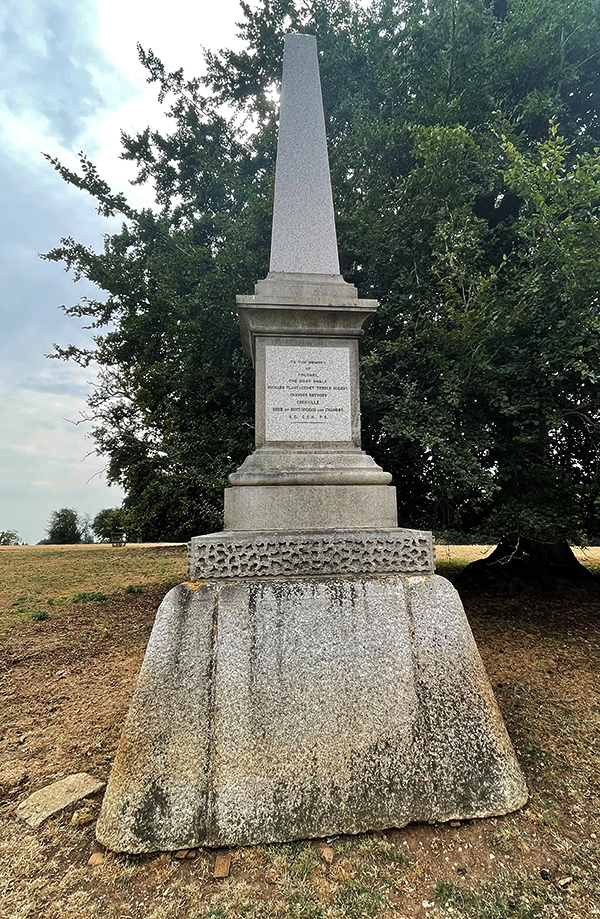
Monument to the 2nd Duke of Buckingham. Photo by kind permission of Steve Goodwin.
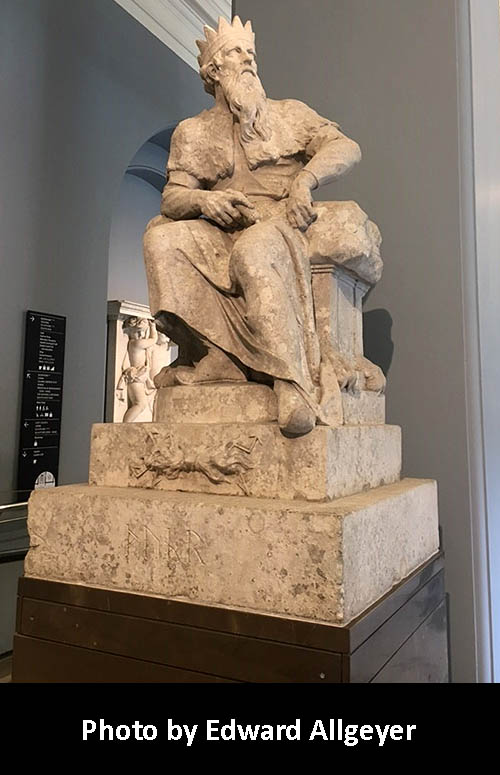
The Rysbrack Portland stone statue of Thuner commissioned for the garden at Stowe and today in the collection of the V&A.
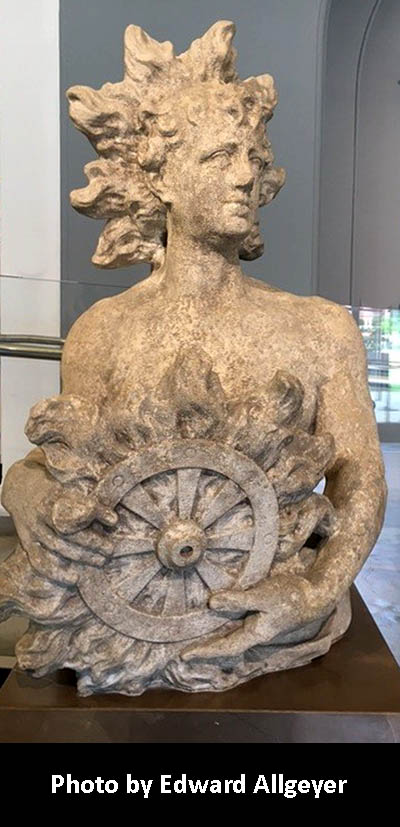
The Rysbrack Portland stone statue of Sunna commissioned for the garden at Stowe and today in the collection of the V&A.
House & Family History: One of the great estates of England, Stowe was settled by the Temple family in the late 16th century. With his fortune from sheep farming in hand, Peter Temple leased the Stowe Estate in 1571; his son, John Temple, purchased Stowe outright in 1589 and so began a 300-year odyssey of fantastic buildings and gardens. Between 1677 and 1683 Sir Richard Temple, 3rd Bt., created the core of current house. Temple's architect was William Cleere, who built for his client a four-story brick house that was 13 bays long. By the 18th century the Temples had been upgraded to viscounts Cobham; Richard Temple, 1st Viscount Cobham, was one of Marlborough's generals and a war hero. He commissioned improvements at Stowe between 1715 and 1749, using Charles Bridgeman and his old friend John Vanbrugh as architects, though Bridgeman worked almost exclusively on the grounds. Vanbrugh added the north portico and rebuilt the north, west, and east facades. After Vanbrugh's death in 1726 William Kent was engaged to continue work on the house—he probably designed the now-demolished two-tier south portico—but it was Kent's designs for the garden for which we remember his work at Stowe today: The Temple of Ancient Virtue, The Elysian Fields, and The Temple of British Worthies. These Kent-designed follies are world class and among the first of their kind in an English garden. In the late 18th century Richard Grenville-Temple, 2nd Earl Temple (an upgrade from viscount!), began significant work on the house. In 1771 the famous Robert Adam presented a design for the south façade (Lord Temple had earlier rejected a design from Jacques-François Blondel); Adam's design was accepted and executed, though it was modified by Thomas Pitt and Giovanni Battista Borra. The interiors of the state apartments were done up in a rich continental style in 1788 by the famous Italian designer Vincenzo Valdrè. In 1793 George Nugent-Temple-Grenville, 1st Marquess of Buckingham (another upgrade in the peerage), converted the east gallery into the large library and then, between 1805 and 1806, he engaged the famous Sir John Soane to create the Gothic Library on the ground floor to house his important collection of medieval manuscripts (a side table of ebonized mahogany and ivory with quatrefoil motifs designed by Soane for the Gothic Library is now in the collection of the Victoria & Albert Museum). The 1st Marquess's son, Richard Temple-Nugent-Brydges-Chandos-Grenville, was created 1st Duke of Buckingham and Chandos in 1822; in 1824 he inherited his Uncle William Wyndham Grenville's important library, described at the time as extraordinarily rich "...in history, philosophy, political economy, mathematics, diplomatic state papers, both printed and manuscript, is the most perfect collection in this country." This library included the "Stowe 2 Psalter," the "Stowe Breviary," and the famous Stowe manuscripts (after the bankruptcy of the 2nd Duke, much of the library was sold). In 1847 Richard Temple-Nugent-Brydges-Chandos-Grenville, 2nd Duke of Buckingham and Chandos, was declared insolvent, with debts of approximately £1.5 million, approximately £1 billion in 2016 values using the labour value commodity index. His spectacular bankruptcy (he was called the greatest debtor in the world) forced the auction by Christie's of the contents of Stowe House, which took place between August 15 and October 7, 1848. Surprisingly, after the auction of the contents, the Stowe Estate remained in the ownership of the dukes of Buckingham until 1889, when, with the death of the 3rd Duke, the dukedom became extinct. Stowe passed to Lady Mary Morgan-Grenville, daughter of the 3rd Duke. She put the house and estate up for sale for £200,000, but couldn't find a buyer. As a result, Stowe was rented to tenants until 1894, after which it remained vacant until 1901, when Lady Mary returned as a widow to take up residency. At her death in 1908, Lady Mary's son, The Rev. Luis C.F.T. Morgan-Grenville, inherited Stowe. With the noose of huge debts around his neck, The Rev. Morgan-Grenville felt that the only thing to do was to sell, which he did in 1921, selling the house, garden, and part of the park to Harry Shaw for £50,000. Mr. Shaw intended to give Stowe to the nation, but, finding that he couldn't raise the required endowment, he sold up in 1922 to what would become Stowe School. The school opened on May 11, 1923 and has remained in Stowe House ever since. In 1997 the ownership of the house passed to the Stowe House Preservation Trust, which was established to preserve and restore the house. In 1999 Stowe was proposed as a United Nations World Heritage Site. The Heritage Lottery Fund granted £5 million to help preserve the house as part of a £40 million restoration program, which was completed in 2014. British and foreign aristocrats and royalty were frequent visitors at Stowe throughout the 18th and 19th centuries. In April 1786 John Adams, later second president of the United States, visited Stowe and other stately houses in the Home Counties. After his visits he wrote in his diary "Stowe, Hagley, and Blenheim, are superb; Woburn, Caversham, and the Leasowes are beautiful. Wotton is both great and elegant, though neglected." Queen Victoria and Prince Albert famously visited Stowe in January of 1845.
Collections: In 1847 Richard Temple-Nugent-Brydges-Chandos-Grenville, 2nd Duke of Buckingham and Chandos, was declared insolvent, with debts of approximately £1.5 million, approximately £1 billion in 2016 values using the labour value commodity index. His spectacular bankruptcy (he was called the greatest debtor in the world) forced the auction by Christie's of the contents of Stowe House, which took place between August 15 and October 7, 1848 (among astounding art treasures, over 21,000 bottles from the wine cellar went under the hammer). The Buckingham Vase (aka The Stowe Vase) was one of the objects sold at the 1848 sale. This large ancient Roman vase (it's 46 inches tall) was excavated by Gavin Hamilton in 1769 at Hadrian's Villa and sold to George, Lord Temple, later 1st Marquess of Buckingham. The vase was famously engraved by Piranesi in 1778 (see "Images" section) and is today in the collection of the Los Angeles County Museum of Art. A number of reproductions were made in various materials in the 18th and 19th centuries. A particularly notable reproduction of the vase is the vermeil Doncaster Cup of 1828, made by Rebeccah Emes and Edward Barnard and today in the collection of Lotherton Hall. In spite of all the publicity, the auction, which was held in the state dining room, raised only £75,400 (approximately £55 million in 2016 values). Events like the auction of the contents of a great house, especially on this scale, were rare in the 19th century, unlike in the 20th century, when the agricultural depression, increasing industrialization, and death duties made country house auctions common. There were further auctions of the contents in 1921 and 1922. A side table of ebonized mahogany and ivory with quatrefoil motifs designed by John Soane, probably made in London circa 1805 for the Gothic Library at Stowe, is today in the collection of the Victoria & Albert Museum. Sir John Soane acquired six antique gemstones from the Duke of Buckingham in 1834. A Worcester service, made circa 1813 for Richard, 2nd Marquess of Buckingham, is today in the collection of Kykuit, the Rockefeller mansion in New York State. George Grenville of Stowe paid £400 in 1774 for a cameo bust of the Athenian general Phocion that had belonged to Cardinal Albani. The state bed, designed by Giovanni Borra in an over-the-top Rococo style, is today in the collection of the Lady Lever Art Gallery. This bed, possibly carved by Jean-Antoine Cuenot, shares design elements with Borra's music room at Norfolk House, London. A circa 1730 settee possibly made by Benjamin Goodison for Stowe (see "Images" section) is today in the collection of the Metropolitan Museum of Art.
Garden & Outbuildings: With over 35 temples and monuments famously placed among its 250 acres, Stowe is considered Europe's most influential landscape garden. Between 1715 and 1749 Vanbrugh, Gibbs, Kent, and Leoni designed temples and follies that were carefully placed in pastures, wooded valleys, lakes, and open spaces for the 1st Viscount Cobham. The Elysian Fields, designed by William Kent during the 1730s, was one of the first "natural" gardens in England and is believed to have introduced the concept of "the English Garden." Kent's Temple of British Worthies is an internationally famous and extraordinarily important folly, as is his Chinese House. Completed in 1738, the Chinese House is the oldest surviving Chinoiserie folly in Britain. Made of painted pine panels on an oak frame, with painted scenes by Francesco Sleter, the diminutive folly has had a peripatetic existence. Originally mounted on stilts in the middle of the lake at Stowe, by 1757 it was installed on dry land at Wotton House, Buckinghamshire, where it remained until 1957, when it migrated to Harristown House in Co. Kildare. It finally came back home in 1992, when the National Trust acquired the Chinese House and reinstalled it at Stowe. Stowe is also home to one of only five Palladian bridges in the world (the others are at Tsarskoye Selo in St. Petersburg, Russia; Wilton House, Wiltshire; Prior Park in Bath; and Hagley Hall in Worcestershire—ruinous by the late 19th century and rebuilt in 2014). In 1922, when Stowe was put on the market, most of the estate was sold off in separate lots. The famous Clough Williams-Ellis purchased the Grand Avenue to prevent its destruction (it was going to be developed as housing) and later gifted it to Stowe School to be maintained as part of the historic landscape. The gardens remained in the ownership of the school until 1989, when an anonymous donor provided an endowment that enabled the National Trust to take over ownership of the historic garden. Between 1999 and the early 21st century conservation repairs were made by the National Trust to Dido's Cave, the rotondo, the Cook Monument, the Gothic Umbrello, Cobham's Monument, and the Wolfe Obelisk. Sunna and Thuner were two of a series of seven Portland stone statues of Saxon gods that the 1st Viscount Cobham, commissioned from John Michael Rysbrack for the garden at Stowe (these two statues are today in the collection of the V&A—see "Images" section). There were seven gods to represent the seven days of the week (Thuner represented Thursday and Sunna was Sunday), all part of a garden that was filled with symbolism of Lord Cobham's liberal, Whig political views (he believed that the Saxons had championed a democratic spirit in public affairs). In 1744 the very first comprehensive guidebook to an English country seat was published; it was entitled "Description of the Gardens of Lord Viscount Cobham at Stow," and produced by a local man, Benton Seeley. A 1788 edition of the book is today in the collection of Stowe School. An interesting gardening side note is that Capability Brown, considered Britain’s greatest landscape designer, was the head gardener at Stowe for 10 years and was married in the estate church.
Architect: Georges Francois Blondel
Date: Post 1774Architect: William Kent
Date: Post 1726 & 1730sArchitect: Vincenzo Valdrè
Date: Completed 1788Architect: John Vanbrugh
Date: Circa 1719-24Architect: Edward Blore
Date: 1839-43Architect: Thomas Pitt (Camelford)
Date: 1752-66 & 1772-77Architect: Henry Flitcroft
Date: Circa 1742Architect: James Gibbs
Date: 1726-48Architect: Giacomo Leoni
Date: Circa 1740Architect: John Soane
Date: 1805-06Architect: William Cleere (Cleare)
Date: 1677-83Architect: John Vanbrugh
Date: 18th centuryArchitect: Giovanni Battista Borra
Date: 1760-77Architect: Robert Adam
Date: 1771-79John Bernard (J.B.) Burke, published under the title of A Visitation of the Seats and Arms of the Noblemen and Gentlemen of Great Britain and Ireland, among other titles: Vol. I, p. 96, 1852.
John Preston (J.P.) Neale, published under the title of Views of the Seats of Noblemen and Gentlemen in England, Wales, Scotland, and Ireland, among other titles: Vol. I, 1818.
Country Life: XVII, 522, 1905. XXXV, 18, 54, 1914. CII, [526, 578, 626, Buildings in Park], 1947. CVIII, 1002 [Temple], 1950. CXXII, 68, 1957. CXXV, 352, 1959. CXL, 260, 1966. CXLV, 78 [Queen's Temple], 1969. CLI, 1416 [Gothic Temple], 1972.
Title: Enlightenment: Discovering the World in the Eighteenth Century
Author: Sloan, Kim; Burnett, Andrew (Editors)
Year Published: 2003
Reference: pg. 132
Publisher: Washington, DC: Smithsonian Books
ISBN: 158834164X
Book Type: Hardback
Title: Saving Wotton: The Remarkable Story of a Soane Country House
Author: Palin, William
Year Published: 2004
Reference: pg. 26
Publisher: London: Sir John Soane's Museum
ISBN: 0954228472
Book Type: Softback
Title: William Kent: Architect, Designer, Opportunist
Author: Mowl, Timothy
Year Published: 2006
Publisher: London: Jonathan Cape
ISBN: 0224073508
Book Type: Hardback
Title: Buildings of England: Sussex, The
Author: Pevsner, Nikolaus; Nairn, Ian
Year Published: 1973
Reference: pg. 466
Publisher: London: Penguin Books
ISBN: 0140710280
Book Type: Hardback
Title: Treasure Houses of Britain, The - SOFTBACK
Author: Jackson-Stops, Gervase (Editor)
Year Published: 1985
Reference: pgs. 417, 526
Publisher: Washington, DC: National Gallery of Art (New Haven: Yale University Press)
ISBN: 0300035530
Book Type: Softback
Title: V&A Guide to Period Styles: 400 Years of British Art and Design, The
Author: Jackson, Anna; Hinton, Morna
Year Published: 2002
Reference: pg. 77
Publisher: London: V&A Publications
ISBN: 0810965909
Book Type: Hardback
Title: Classical Architecture in Britain: The Heroic Age
Author: Worsley, Giles
Year Published: 1995
Reference: pg. 219
Publisher: New Haven: Yale University Press (The Paul Mellon Centre for Studies in British Art)
ISBN: 0300058969
Book Type: Hardback
Title: Country Life (magazine)
Author: NA
Year Published: NA
Reference: Mar 27, 2003, pgs. 124-128
Publisher: Bath: Future plc
ISBN: NA
Book Type: Magazine
Title: In Ruins
Author: Woodward, Christopher
Year Published: 2001
Publisher: London: Chatto & Windus
ISBN: 070116896X
Book Type: Hardback
Title: Movie Locations: A Guide to Britain & Ireland
Author: Adams, Mark
Year Published: 2000
Publisher: London: Boxtree
ISBN: 0752271695
Book Type: Softback
Title: Biographical Dictionary of British Architects, 1600-1840, A - SOFTBACK
Author: Colvin, Howard
Year Published: 1995
Reference: pgs. 59, 129, 133, 145, 253, 368, 406, 610, 758, 910, 1008
Publisher: New Haven: Yale University Press
ISBN: 0300072074
Book Type: Softback
Title: Historic Houses (magazine)
Author: NA
Year Published: NA
Reference: Spring 1999, pg. 16
Publisher: London: Historic Houses Association
ISBN: 0260-8707
Book Type: Magazine
Title: Royal Oak Newsletter, The
Author: NA
Year Published: NA
Reference: Spring 1999, pg. 14
Publisher: New York: The Royal Oak Foundation
ISBN: NA
Book Type: Magazine
House Listed: Grade I
Park Listed: Grade I
Past Seat / Home of: Sir Richard Temple, 3rd Bt., until 1697; Field Marshal Richard Temple, 1st Viscount Cobham, until 1749; Richard Grenville-Temple, 2nd Earl Temple, until 1779; George Nugent-Temple-Grenville, 1st Marquess of Buckingham, until 1813; Richard Plantagenet Temple-Nugent-Brydges-Chandos-Grenville, 2nd Duke of Buckingham and Chandos, until 1850.
Current Ownership Type: Preservation Organization
Primary Current Ownership Use: Mixed Use
Ownership Details: The house is owned by Stowe House Preservation Trust, which leases it to Stowe School. Some rooms are open for limited hours. The National Trust owns the park and grounds, which are open to the public.
House Open to Public: Yes
Phone: 01280-818-002
Fax: 0128-081-886
Email: [email protected]
Website: http://www.stowe.co.uk
Historic Houses Member: Yes